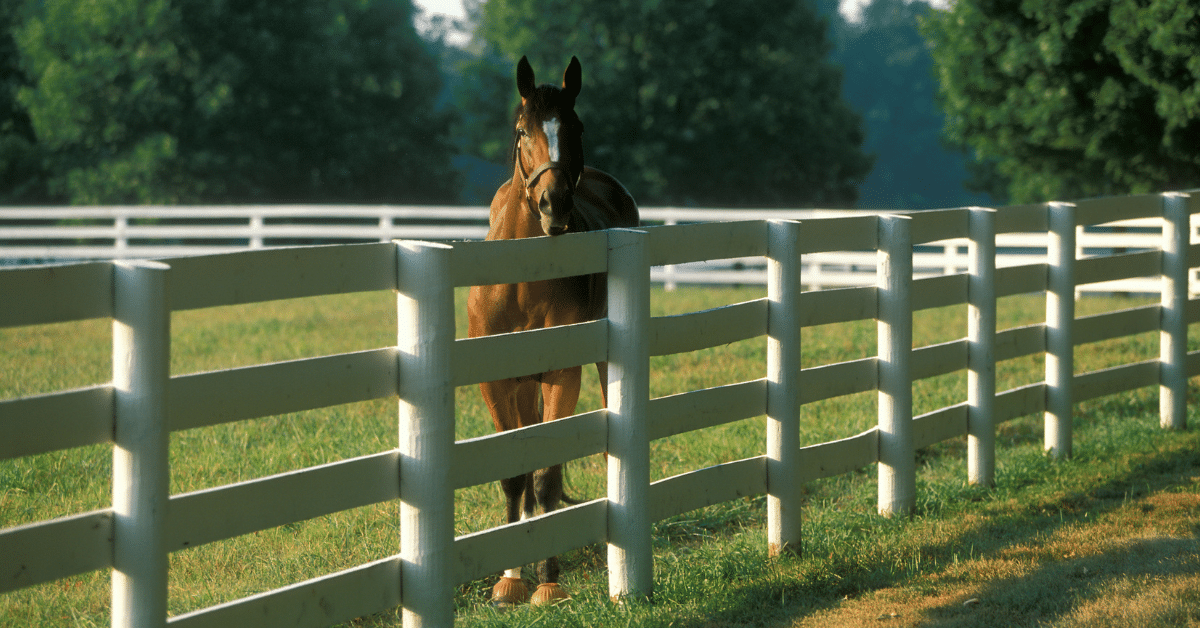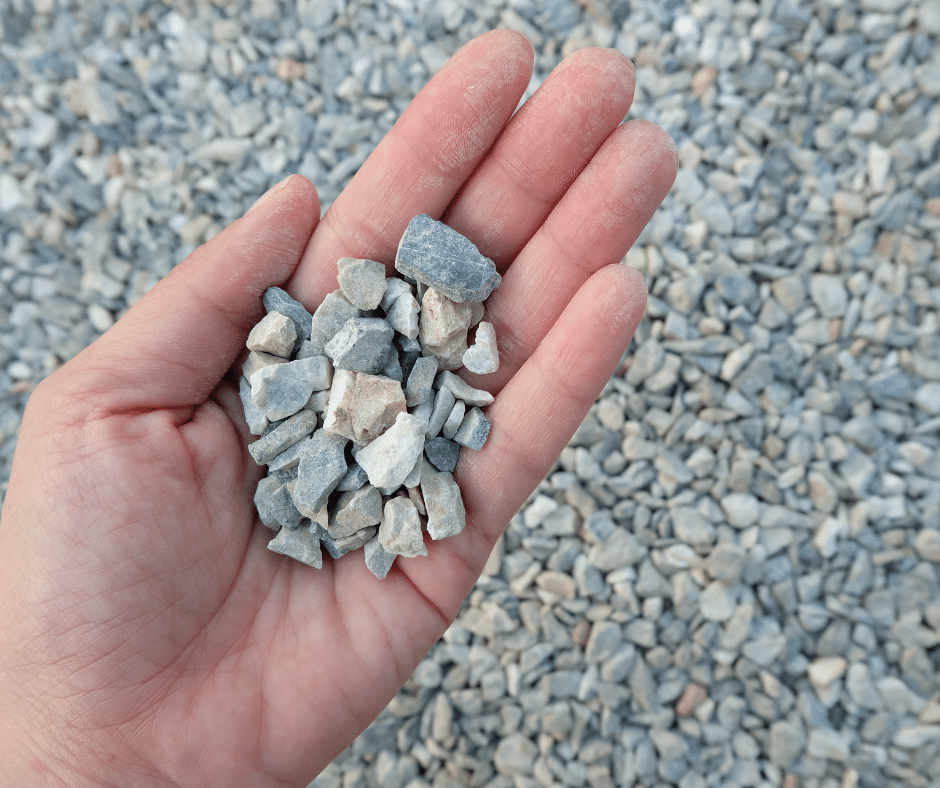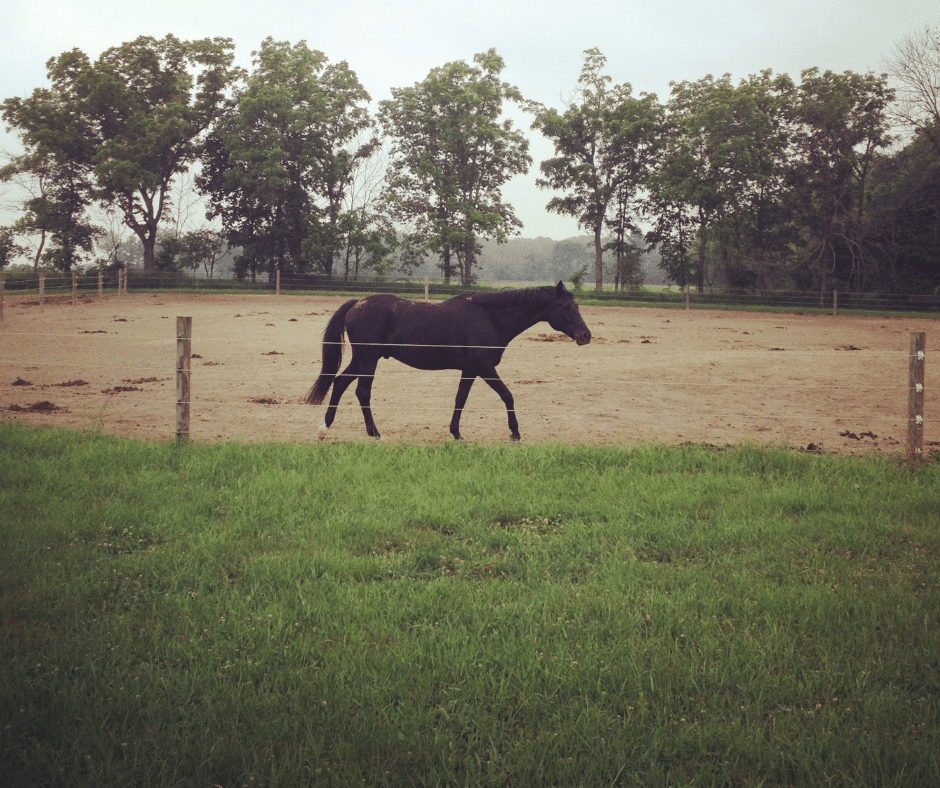What is a Horse Paddock?
Horse paddocks are enclosed areas used to hold horses. Paddocks are typically very small, and for most horse owners, they serve a unique purpose. Horse paddocks allow horse owners to place their horses within a controlled area. Paddocks can be beneficial for many situations that horse owners can find themselves in.
What Are Horse Paddocks Used For?
 There is no single reason that a horse owner chooses to install a paddock for their horse, as there are many circumstances in which a paddock is really helpful. Some of the most common purposes of paddocks for horses include:
There is no single reason that a horse owner chooses to install a paddock for their horse, as there are many circumstances in which a paddock is really helpful. Some of the most common purposes of paddocks for horses include:
#1. Breeding
A paddock allows for certain horses to be placed together in a controlled environment and let the natural process of reproduction occur. Placing them within a paddock together eliminates the risk of outside interference from any other horses on the property.
#2. Movement
Horses that are confined to their stalls inside of a barn all day need turnout time. In these cases, horse owners often opt for their paddock to be attached to the barn to allow for quick and easy turnout.
#3. Injury
If a horse is nursing an injury, it can be a good idea to keep them inside of a paddock. Not only does this keep them separated from other horses to prevent furthering the injury, but placing them inside a small paddock will limit their movement and help them to heal from the injury faster.
#4. Separate Horses
Paddocks can be especially useful if you’re needing to keep horses separated due to shown aggression. In some cases, horses only show aggression during meal time and may need to be separated from other horses only while they are eating.
#5. Diet
If you are needing to limit the food intake of your horse, placing them within a paddock to be able to monitor their diet is a good option.
How Much Do Horse Paddocks Cost?
The cost of building a horse paddock varies greatly, depending on how many horses that you intend for it to accommodate and the prices of lumber. As most of us know, the cost of lumber has fluctuated greatly within the past few years - so even though you may have gotten a quote in the past, it’s likely that that cost is very different today. The best way to get an accurate idea on how much it will cost you to add a paddock to your property is to get in touch with a local lumber supplier to find out current pricing.
If you’re on a tight budget, you might be interested in checking out this YouTube video where Lisa Goodwin DIY shares how she made a horse paddock for less than $500.
What Material Should Be Used for Horse Paddocks?
Most commonly, horse paddock fencing is made from lumber. It’s important when deciding on a material that it is strong, and also free from any sharp edges as to keep your horse safe. It’s also important to remember that if your horse is inside of a paddock with wood fencing for a long period of time, they will probably start to chew on it. To avoid this, there are chew repellents available to be sprayed or painted on top of the wood. Some people also opt for a non-chewable fencing material such as metal pipe.
Footing Materials for Paddocks
Although not completely necessary, a lot of horse owners choose to add paddock footing. Placing a footing inside of the paddock will provide a more sturdy area, reduce any moisture, keep mud under control, and create a more clean area for your horse. There are a few options out there when it comes to adding paddock footing:
#1. Wood Chips
I’ve used wood chips in a paddock before. Although it’s a cost-efficient option, I would not recommend it at all. Wood chips are hard to clean, they retain moisture and create mold/bacteria, and they break down easily. In addition, they are a pain to maintain. Wood chips will need to be removed and replaced with a fresh batch every year or two. However, horses do tend to really like wood chips.
 #2: Sand
#2: Sand
Some horses need a really soft area to walk on or lie down on due to medical reasons. In this case, sand is an okay option. But be advised, sand is dangerous to horses if it is ingested. Make sure that you use heavy sand and not any type of fine sand.
#3: Gravel
My personal favorite option is gravel. There are many sizes and types of gravel that are available so you can really customize it to what your horse likes. In addition, it’s easy to maintain, lasts for a long time, and it’s simple to clean too.
#4: Man Made Footing
Of course, if you don’t like any of the above options, there are man made options you could opt for too. Some examples of these include rubber stall mats, arena footing, flexible plastic cover, or even recycled rubber.
How Big are Horse Paddocks?
Paddock sizes can have a wide range, but a good rule of thumb is that paddocks should allow at least 600 square feet per horse. On average, most horse paddocks are a 20 x 60 foot area. Another good rule to follow is that paddocks should be less than one acre.
Horse Paddock Layout
When it comes to deciding how and where to layout your horse paddock, there are a few key things that you should keep in mind, such as:
Decide how many horses your paddock needs to accommodate.
How many paddocks are you going to have? If you are planning for more than one paddock, it’s best to lay them out next to each other as this can minimize the stress of your horses.
Determine accessibility and needs.
Are you going to be turning them out directly from the barn? If so, it might be best to build your paddock in an area that is attached to the barn. You should also place your paddock in an area that you keep yourself in mind too. Is it easily accessible for maintaining, cleaning, feeding, etc?
Find a good area for construction.
You’ll also need to pay attention to the lay of the land when planning the layout of your horse paddock(s). The area where the paddock will go should be placed away from water sources, as well as in an area that will drain water well. Horse paddocks should be able to stay dry to keep them clean - you definitely don’t want your paddock turning into a mucky mess.
A couple horse paddock ‘red flag’ areas to avoid:
-
Any area over or near the septic system
-
Low-lying wet areas
-
North end of properties that tend to be heavily shaded
-
Any area that experiences irrigation or rainwater runoff
 Horse paddock design.
Horse paddock design.
After you’ve decided how many horse paddocks and where you’re going to place the paddock for convenience as well as the best spot of land, then you can determine the shape that your horse paddock will need to be. There are no standard rules when it comes to the shape of a paddock. The shape should be one that is most beneficial for your land, the drainage, and the needs of both you and your horse.
Frequently Asked Questions
What’s the difference between a pasture and a paddock?
A horse pasture refers to a large area of fenced-in land. Pastures are plots of land that are intentionally grown and maintained for the purpose of animals to graze. Whereas with horse paddocks, these areas are much smaller and not meant for grazing.
Can horses live in paddocks?
In the case of a traditional horse paddock, the answer is no. Most horse paddocks are non-grazeable and too small for a horse to permanently live in.
Why do horses need paddocks?
The reasons for a horse needing a paddock are endless. Paddocks certainly aren’t necessary in all situations, but paddocks can be very helpful to provide a safe, clean, and controlled area for a horse.
Why is a horse paddock called a paddock?
The word paddock originates from the word parreoc which means ‘an enclosure’ - a paddock is a small enclosure used for horses.
Should you rotate horse paddocks?
Many horse owners choose to rotate paddocks in order to allow the land to rest. Paddocks are often under heavy amounts of use which can be damaging to the ground.

 #2: Sand
#2: Sand Horse paddock design.
Horse paddock design.